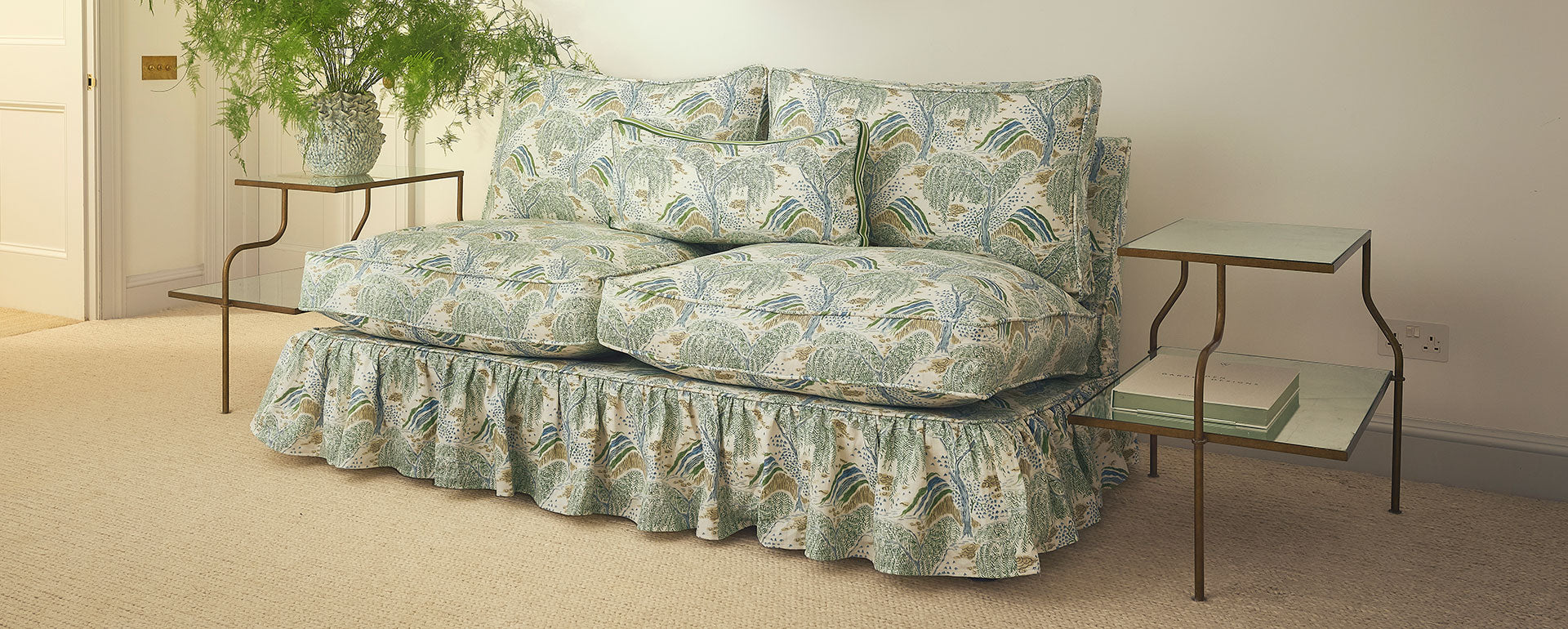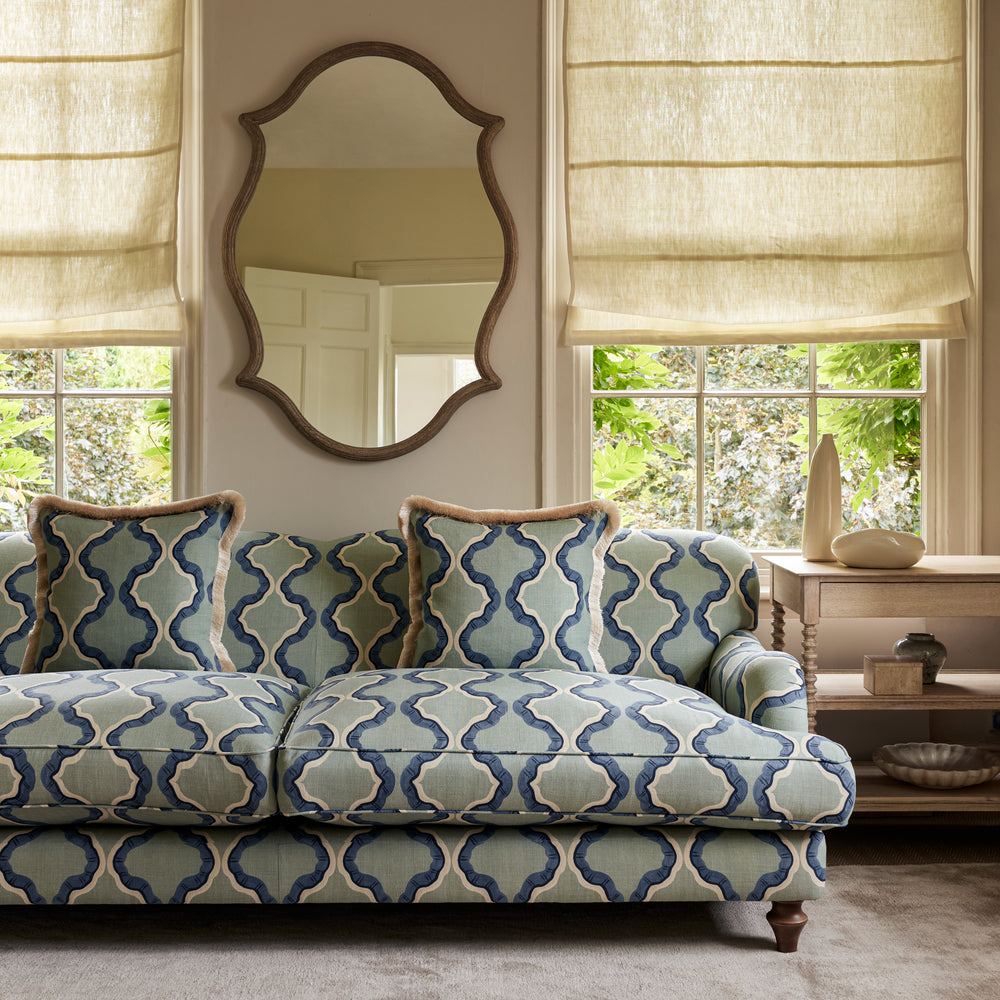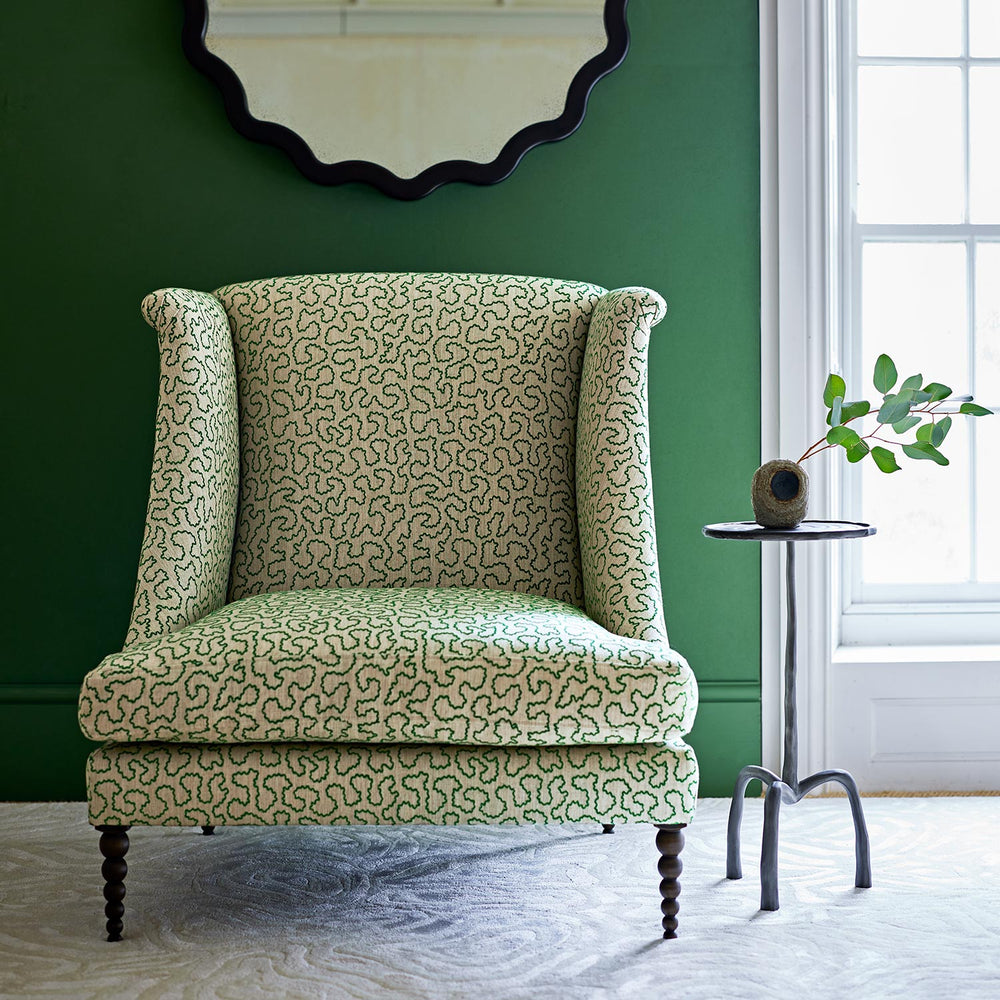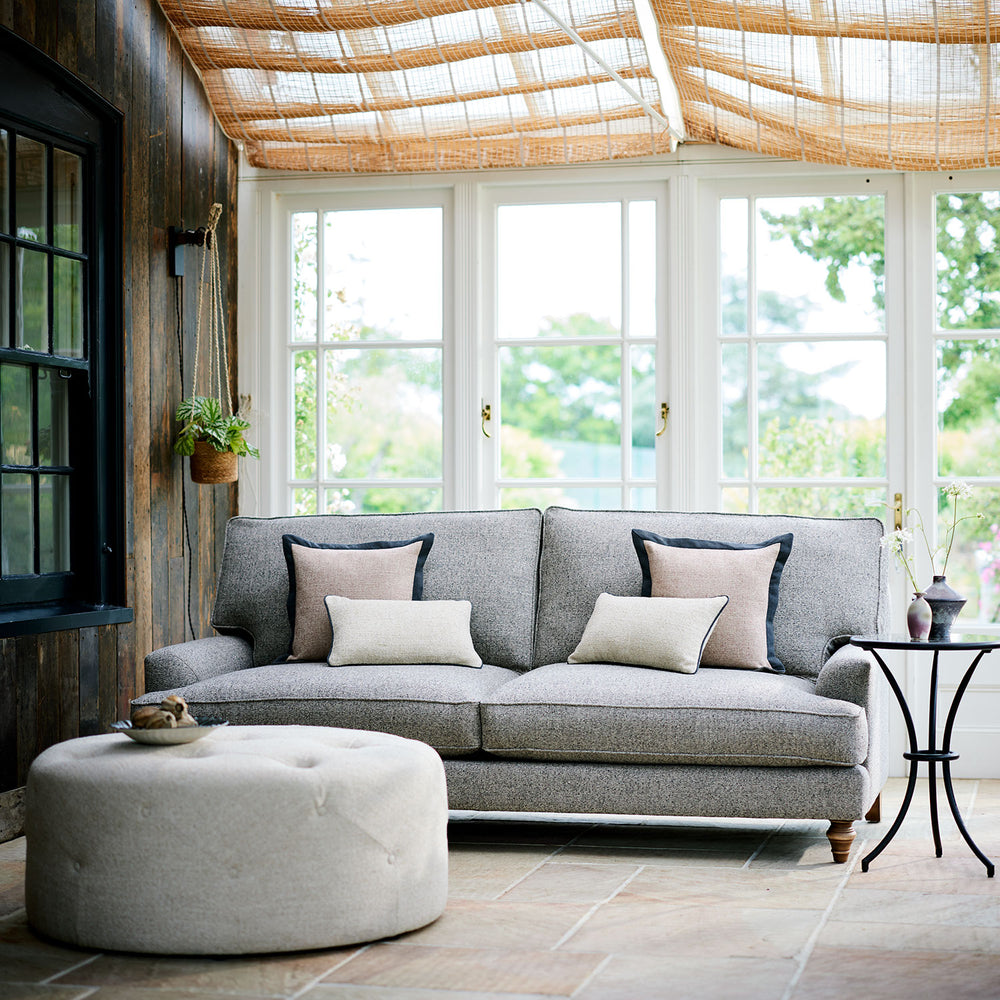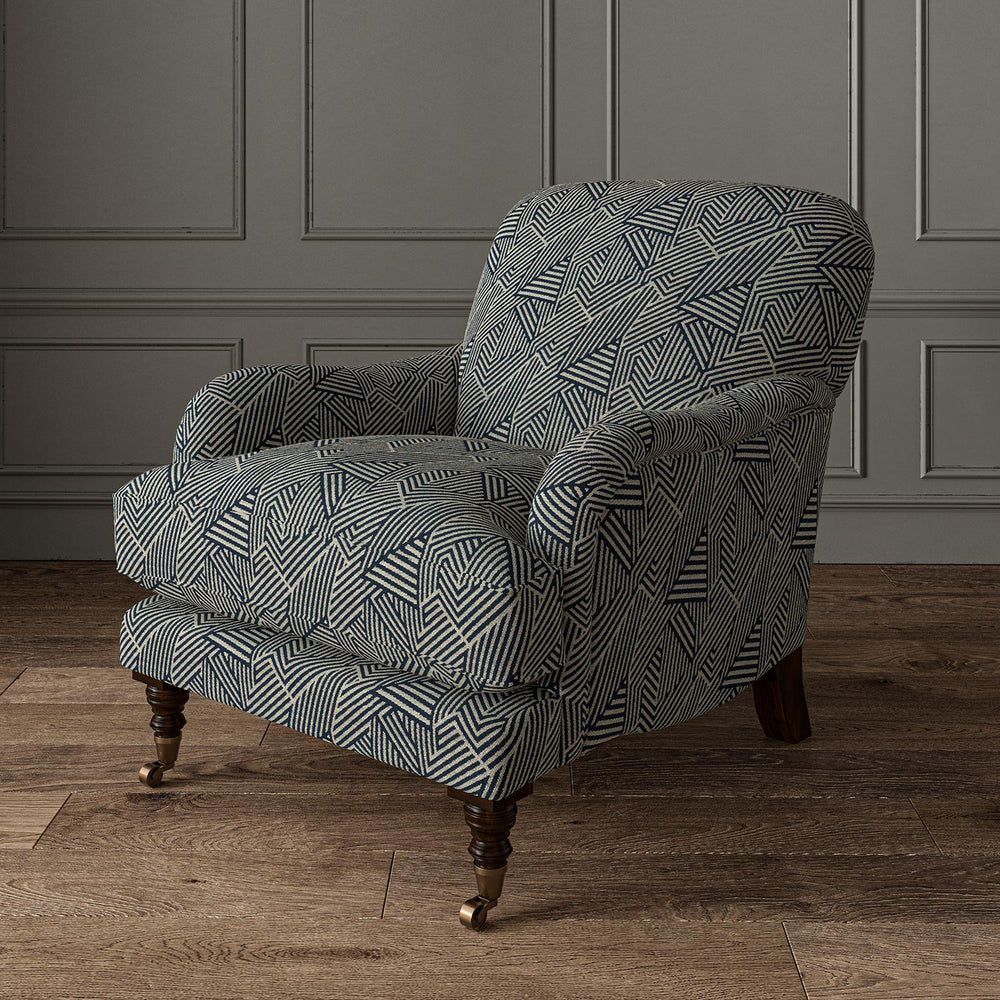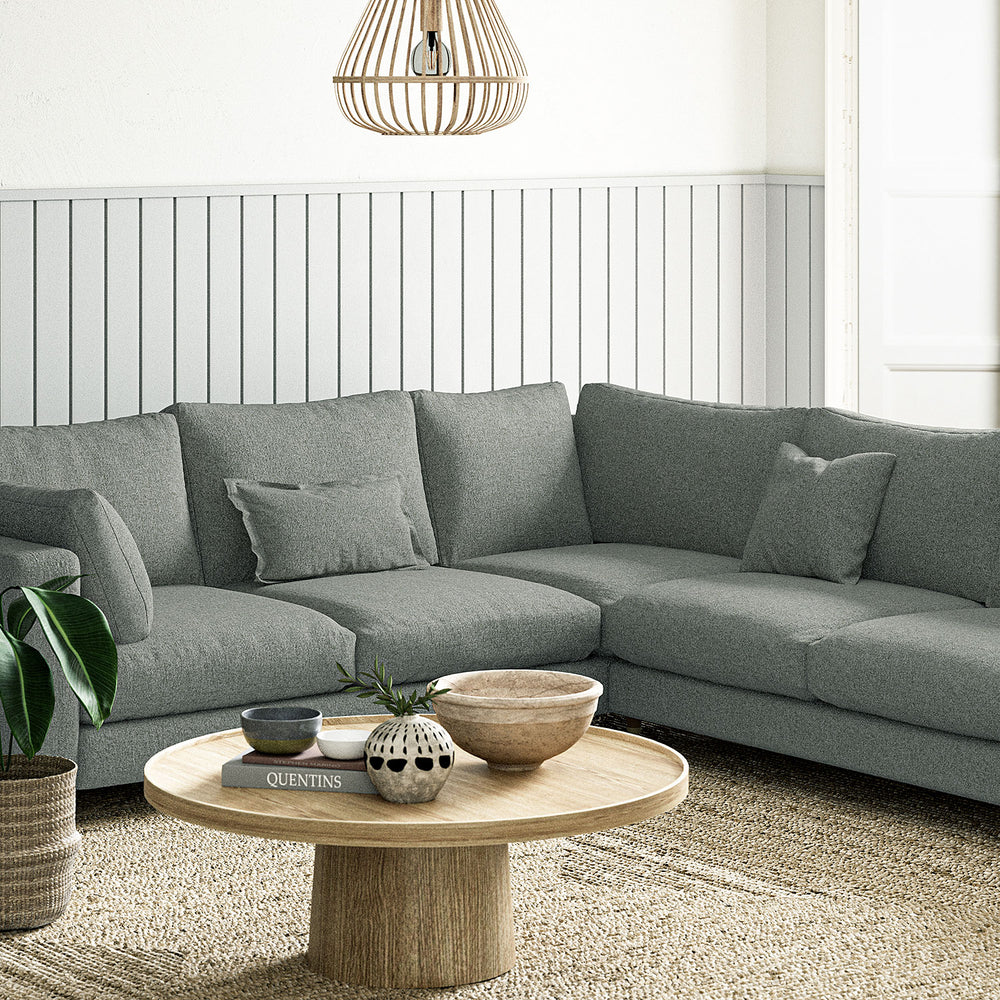FAQs... Upholstery Fabrics
What is an upholstery fabric?
In a nutshell, this is a durable fabric that’s heavy-duty enough to cover a piece of upholstered furniture in your living space. The durability of an upholstery fabric is measured by the universally recognised Martindale test, which identifies how much wear and tear a fabric will take before there is a noticeable change in its appearance. Fabric to be tested is clamped into four circular holders that are then set to mechanically rub a second fabric that emulates clothing. The test ends when two threads of the tested fabric have broken from wear, and the number of cycles completed is recorded.
• Fabric with a score of 10,000 or less is only fit for decorative soft furnishings such as cushions or curtains.
• Fabric of 10,000 to 20,000 rub counts is suitable for light domestic use such as occasional furniture – a headboard, an ottoman or dining chairs, for example.
• Fabric of 20,000 to 25,000 rub counts is suitable for general domestic use and can be used on main pieces of furniture in the home, although it is not suitable for items of furniture that put a high level of stress on the fabric, such as a recliner.
• Fabric with a rub count of 25,000 to 30,000 works for heavy domestic use and is deemed a heavy-duty fabric that would be suitable for all household pieces (including recliners and other motion furniture); it is also suitable for light commercial use.
• Fabric of 30,000 to 40,000 denotes a general contract grade fabric.
• Fabric of 40,000 upwards is suitable for severe contract use.
What factors should I consider when choosing upholstery fabric?
First and foremost, you need to check if your fabric of choice is fit for purpose. A silk fabric that is only suitable for light domestic use won’t survive daily wear and tear on a sofa in a busy household, so think about how much use the fabric is likely to get. If it will probably be subject to the odd accidental spill, consider a stain resistant option; another solution is to choose a machine washable fabric that can be made into slipcovers. Aesthetics are, of course, very important, too: you might want your upholstery fabric to set the tone for an entire room scheme, or perhaps you are choosing a fabric to fit with existing interior décor. Plain fabrics are hugely popular for large-scale upholstery pieces such as sofas and chairs but remember that a patterned fabric can be remarkably forgiving when it comes to concealing the odd scuff or stain. Also consider the feel of the fabric: natural, breathable fabrics such as cotton and linen are ideal for creating a relaxed, breezy scheme, while wool – another natural, breathable choice – is wonderful for bringing cosiness to a room. Velvet feels fabulous to the touch and is unparalleled for creating a sense of opulence, while leather is gorgeously smooth and will patinate nicely over time.
How do I clean and maintain different types of upholstery fabrics?
All types of upholstery fabric will benefit from regular maintenance, as general dust is a key culprit for making fabrics appear tired and lacklustre. Vacuum your sofa or armchair regularly using the upholstery attachment on the vacuum cleaner – in the case of velvet upholstery fabrics, this will also help maintain the pile – and use the crevice attachment to hoover up crumbs from the nooks and crannies. If your sofa has loose seat or back cushions, they need plumping to redistribute the filling and ensure their longevity; this is also a great way to eliminate dust.
The odd spill is an inevitable part of life and while it is understandable that you may want to reach for specialist stain removers and cleaning solutions, these can irreparably damage certain upholstery fabrics – even water can be problematic, leaving a watermark that is impossible to remove. Linwood has a large and diverse range of fabrics with a stain resistant finish – including
our polyester velvets such as Omega, Omega Prints and Kami, as well as Juno
plain weaves – which means that most spills can simply be blotted: use a soft,
lint-free cloth or paper towel to absorb excess liquid, leaving it on the spot
until as much liquid is absorbed as possible; you can them try gently wiping
it. If the stain persists, however, we advise contacting an expert. If your
upholstery fabric is dry clean only, try to blot the spill as quickly as
possible, before getting in touch with a professional dry cleaner.
Irrespective of spills and stains, upholstery fabrics will also require a deep clean from time to time. If your fabric is dry clean only, you will need to use a specialist upholstery cleaning service, which will know the right solvents to use according to the fabric’s care label. If you have chosen slip covers in a machine washable fabric – our Elba linen or Verde cotton are both perfect for this – make sure you follow the washing instructions carefully, and don’t overload the washing machine drum. In the case of both dry clean and machine washable fabrics, it is important to clean all items featuring the same fabric in one go, in order to avoid colour variations.
The most durable upholstery fabric options for high-traffic areas…
As explained above, the Martindale test is the best way to judge the durability of an upholstery fabric. Linwood has a large range of fabrics with a Martindale score of 100,000, making them incredibly durable solutions for favourite pieces. Options include our polyester velvets collections such as Omega plain velvets, Omega Prints, Tango, Kami and Wildlife, as well as elegant woven fabrics such as Freya, or our textural bouclé, Sienna. Also take into consideration whether a fabric is stain resistant, as this improves the durability of the piece in terms of general accidents. Most of Linwood’s velvet fabrics are stain resistant, as are several woven designs such as Leckford, a versatile herringbone with a high Martindale rub test of 95,000 and Juno, a linen blended with synthetic materials to give it a high rub count of 60,000.
